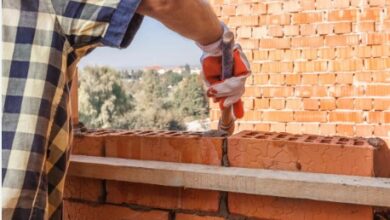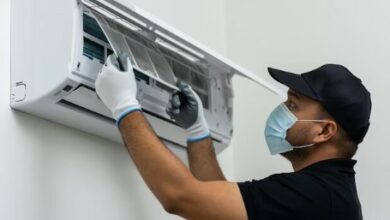How to Prepare Your Home for a Roof Replacement

A roof replacement in Boston, MA, is a significant home improvement project that requires careful planning and preparation. Ensuring your home is ready for the process can help the project run smoothly, minimize disruptions, and protect your property. We will explore the steps you should take to prepare your home for a roof replacement, covering everything from securing your home’s interior to communicating with your roofing contractor.
Steps you should take to prepare your home
1. Secure Your Home’s Interior
One of the first steps in preparing for a roof replacement is to secure the interior of your home. Roof replacement can be noisy and create vibrations that may cause items to fall or shift. Remove any valuable or fragile items from the walls and shelves, particularly on the top floor, to prevent damage. Cover furniture, beds, and other important items with drop cloths or plastic sheeting to protect them from dust and debris. Additionally, consider taking down light fixtures or ceiling fans to prevent them from being dislodged during the work. Ensuring your home’s interior is protected will give you peace of mind throughout the project.
2. Prepare the Exterior of Your Home
Preparing the exterior of your home is equally important. Start by trimming trees and shrubs that are close to the house to provide easy access for the roofing crew and equipment. Move outdoor furniture, potted plants, and lawn ornaments away from the house to prevent them from being damaged. If you have a sprinkler system, mark the sprinkler heads to avoid any accidental damage. Additionally, consider covering or relocating any delicate landscaping features to protect them from falling debris. These preparations will help create a safe and efficient working environment for the roofers.
Read also: The Importance of Regular HVAC Maintenance for Your Home
3. Clear the Driveway and Garage
The driveway and garage will likely be used by the roofing crew for parking and staging materials. Clear your driveway of vehicles, bikes, and other items to provide ample space for the crew’s vehicles and equipment. If possible, park your cars away from the house or on the street to avoid any potential damage from falling debris. It’s also a good idea to keep your garage doors closed during the project to prevent dust and debris from entering. By keeping these areas clear, you can facilitate smoother access for the roofers and protect your property.
4. Inform Your Neighbors
Roof replacement can be a noisy and disruptive process, and it’s considerate to inform your neighbors about the upcoming project. Give them a heads-up about the dates and duration of the work, so they can plan accordingly. If you share a driveway or have close property lines, discuss any necessary arrangements to minimize inconvenience. Keeping your neighbors informed demonstrates good communication and helps maintain positive relationships within your community. Additionally, consider providing your contact information to your neighbors in case they have any questions or concerns during the project.
5. Plan for Noise and Disruptions
Roof replacement involves loud noises and vibrations that can be disruptive to your daily routine. Plan ahead to minimize the impact on your household. If possible, schedule the work during a time when family members can be away from home, such as during school or work hours. If you work from home, consider finding an alternative workspace for the duration of the project. Inform children and pets about the noise and disruptions, and make arrangements to keep pets safe and comfortable, either by keeping them indoors or at a friend’s house. Planning for these disruptions will help reduce stress and ensure a smoother experience.
6. Protect Your Belongings in the Attic
The attic is particularly susceptible to dust and debris during a roof replacement. Take time to protect any belongings stored in your attic by covering them with plastic sheeting or moving them to a safer location. If you have items that are sensitive to temperature changes, such as electronics or delicate fabrics, consider relocating them temporarily. Additionally, close any attic vents to prevent dust from spreading to other areas of your home. Protecting your attic belongings will help preserve their condition and keep your home clean during the roofing project.
7. Communicate with Your Roofing Contractor
Effective communication with your roofing contractor is crucial for a successful roof replacement. Before the project begins, have a detailed discussion with the contractor about the timeline, scope of work, and any specific concerns you may have. Make sure you understand the process and what to expect at each stage. Ask about any preparations you should make and any precautions they will take to protect your property. Provide your contact information and ensure you know how to reach the contractor if any issues arise. Clear communication will help prevent misunderstandings and ensure the project proceeds smoothly.
Conclusion
Preparing your home for a roof replacement involves several important steps, from securing the interior and exterior of your home to communicating with your neighbors and roofing contractor. By taking these measures, you can help ensure the project runs smoothly, minimize disruptions, and protect your property. Thoughtful preparation will not only make the experience more manageable but also contribute to a successful roof replacement that enhances the safety and value of your home. Taking the time to prepare properly will provide peace of mind and set the stage for a positive outcome.








